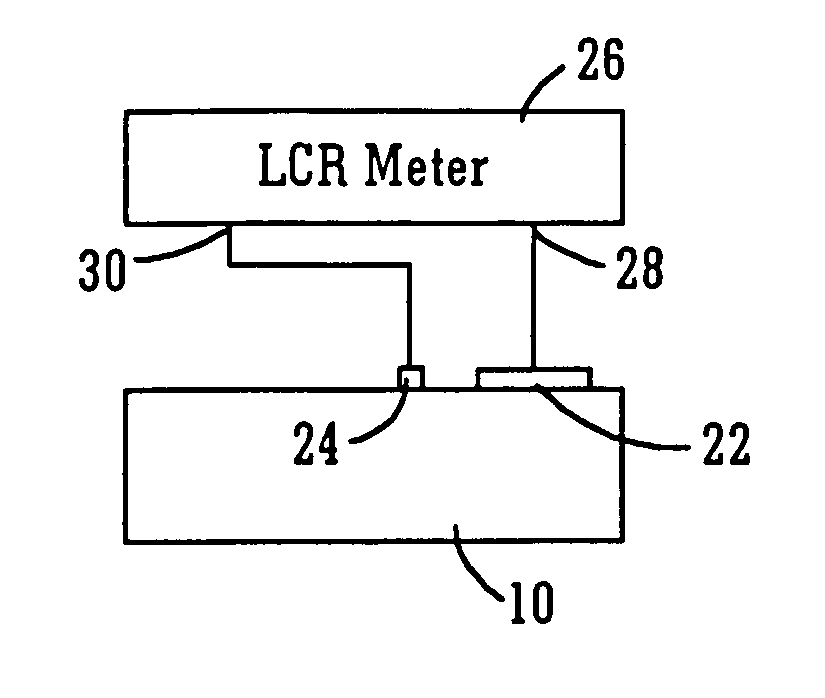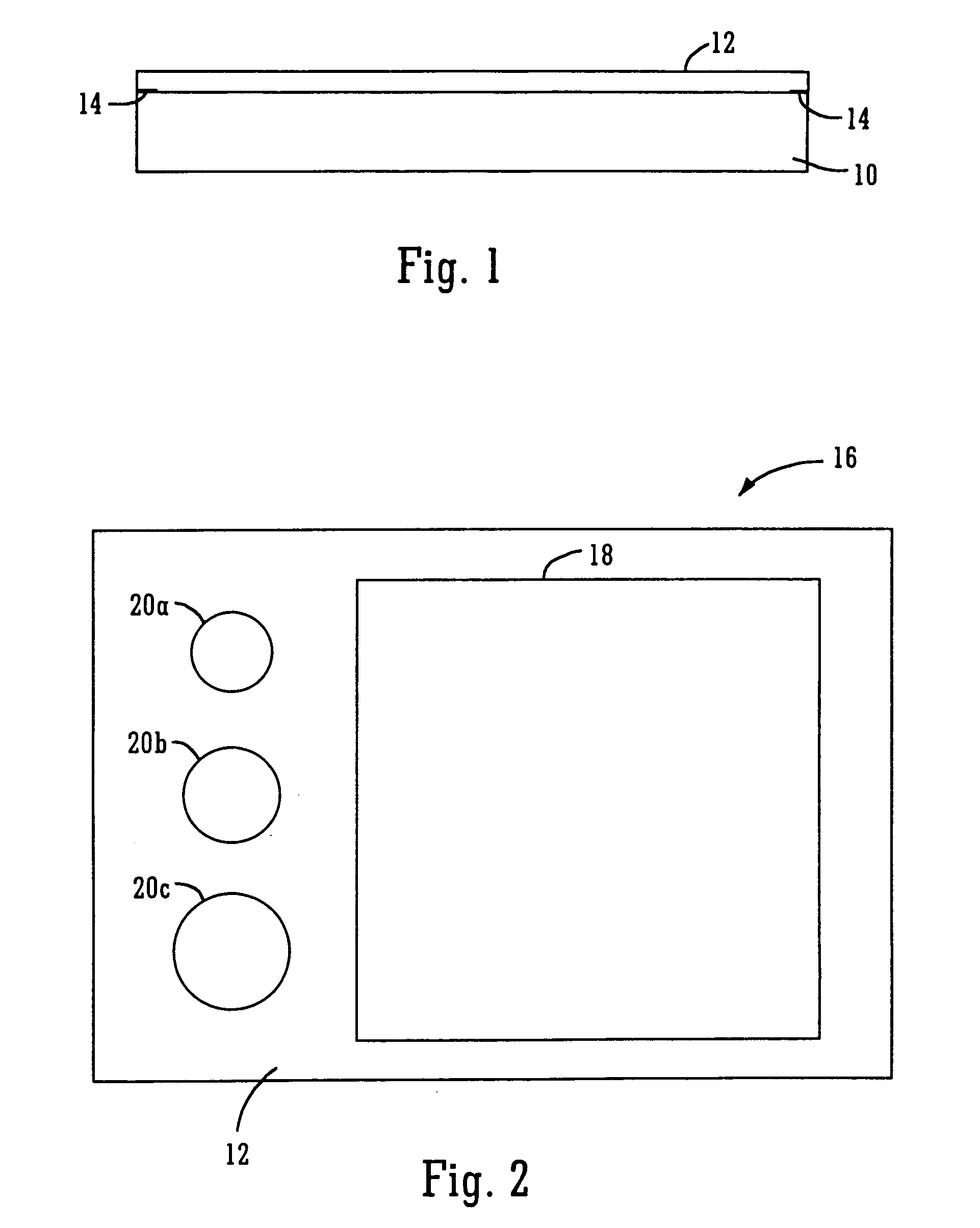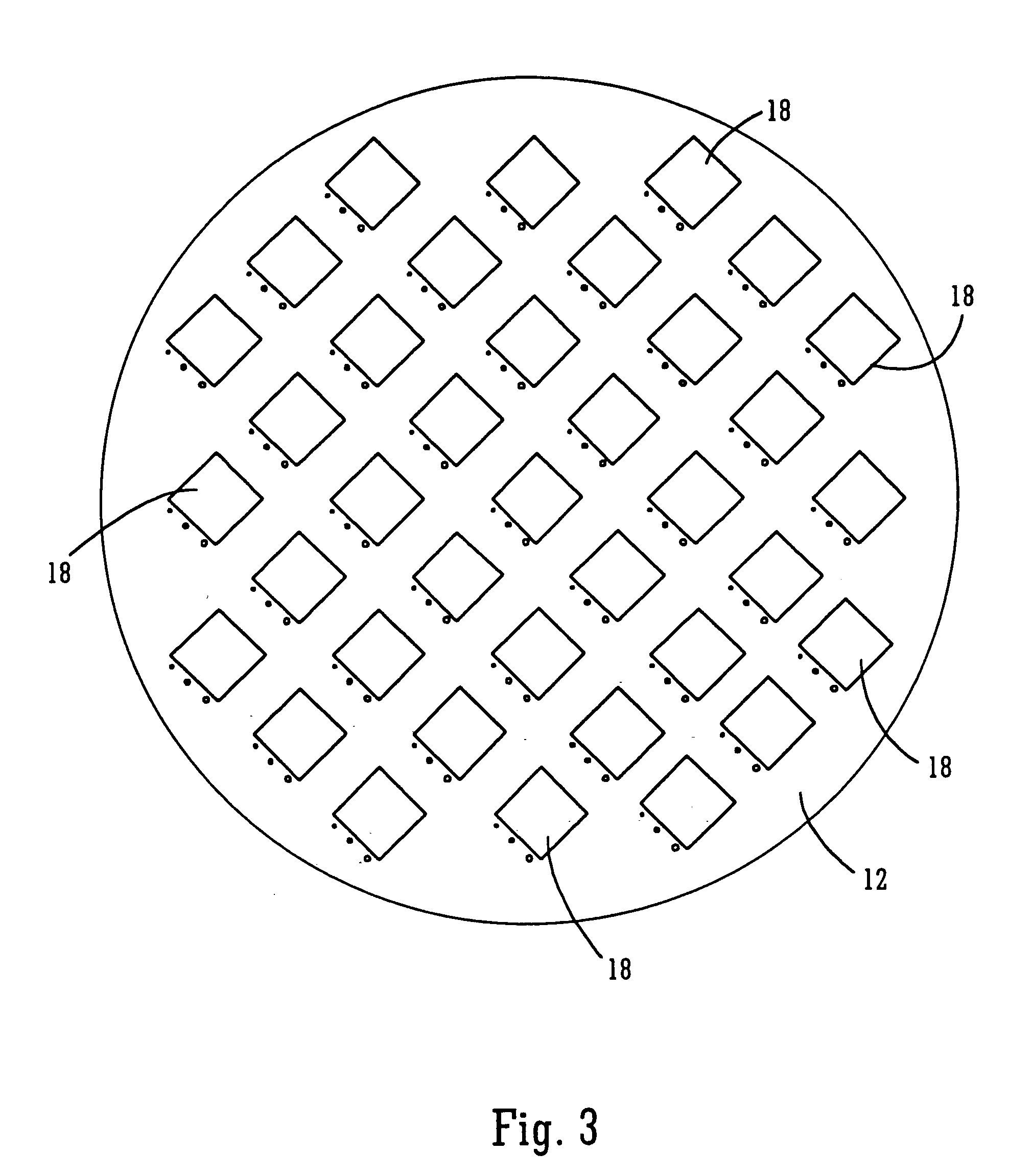Method for determining metal work function by formation of Schottky diodes with shadow mask
a diode and shadow mask technology, applied in the field of metal gate work function determination, can solve the problems of reducing the controllability of the gate, the metal gate cannot withstand the higher temperature and oxidation ambient, and the polysilicon gate electrod
- Summary
- Abstract
- Description
- Claims
- Application Information
AI Technical Summary
Benefits of technology
Problems solved by technology
Method used
Image
Examples
Embodiment Construction
[0018]The present invention addresses and solves problems related to the screening of potential metal gate materials for use in semiconductor devices. In particular, the traditional methods of forming Schottky diodes to measure metal work function employed conventional lithography, metal deposition and etch processing steps. The present invention avoids such steps by forming a metal deposition on blanket silicon wafers with a metal gate material whose work function is to be determined. This is accomplished by the use of a shadow mask having specified repeating patterns. The metal-on-silicon formed by the deposition of metal through the holes in the shadow mask create a Schottky diode. By measurement of the capacitance-voltage curve of the Schottky diode, the work function of the metal can be determined.
[0019]FIG. 1 schematically depicts an arrangement for preparing a Schottky diode to determine a metal work function in accordance with embodiments of the present invention. A silicon ...
PUM
 Login to View More
Login to View More Abstract
Description
Claims
Application Information
 Login to View More
Login to View More - R&D
- Intellectual Property
- Life Sciences
- Materials
- Tech Scout
- Unparalleled Data Quality
- Higher Quality Content
- 60% Fewer Hallucinations
Browse by: Latest US Patents, China's latest patents, Technical Efficacy Thesaurus, Application Domain, Technology Topic, Popular Technical Reports.
© 2025 PatSnap. All rights reserved.Legal|Privacy policy|Modern Slavery Act Transparency Statement|Sitemap|About US| Contact US: help@patsnap.com



